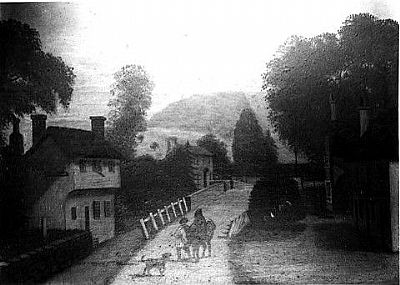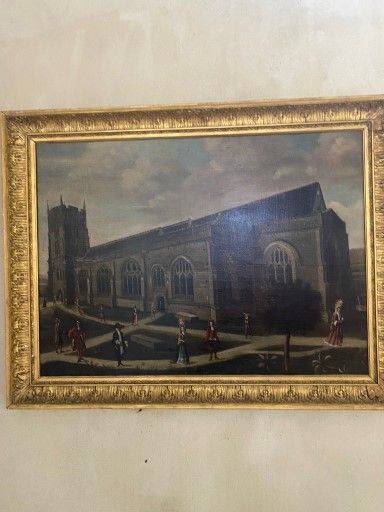From ‘Emergence’ Magazine…….’Our House’…..
by Bernie Bell - 07:41 on 12 May 2025
From ‘Emergence’ Magazine…….
“An Essay of (K)Nots and Footnotes
by Layli Long Soldier
“Instinct tells me that an opening for possibility still lies in language, in the multitudes of definitions and interpretations—which must include our Native languages and understandings.”
Drafted by the U.S government and signed by Očeti Šakowin elders with just an X, the 1868 Treaty of Ft. Laramie marked a potential agreement between two sovereign peoples. But for poet Layli Long Soldier, the self-determination of her people, the Oglala Lakota Nation, remains entangled and bound in the language of the law.
Layli, whose work has long explored the creative force of legal rhetoric, brings together two timelines—legislative and ancestral—to empower the Očeti Šakowin and renew the possibility of a mutual understanding. She traces how Lakota homelands were diminished over decades through treaties and court rulings, but repeatedly interrupts this legal narrative with the story of Iron Hail—a Mniconjous Lakota elder who fought at the Battle of Little Big Horn and survived the Wounded Knee Massacre. His story, woven throughout the text in red-brown footnotes, is a living thread, cutting across the imposed settler narrative and untangling the knotted relationships embedded in this land. “While these events seem distant,” Layli writes, “the past has (k)not passed.”
https://emergencemagazine.org/essay/an-essay-of-knots-and-footnotes/
“This is how time
works.
A tapestry of
interconnectivity.
Pull on a
loose thread,
and find it woven
through to the
first (k)not.”
—Layli Long Soldier
*******************************************************
Our house
Corner of it anyway

Look at this picture. It was first sent to me five years ago by my late chum, the King of Presteigne High Street, Andy Leavis. He thought it was in the Radnorshire Museum in Llandrindod Wells; shamefully, I haven’t been over to check this theory. I imagine the original is in colour. I can see all of this from my bedroom window (including most days, some people on horseback.)
Our house, the Old Grammarye, is largely obscured in shadow on the far right of the picture, but you can make out the corner. If I had been looking out at this scene when the picture was painted, the group of figures would be directly under my window.
At the time the picture was painted, the row of cottages of which our house is now one consisted of three dwellings. Two were knocked together at some point to form our house; the third is still a seperate cottage, and a second home.
The house opposite is called ‘Bridge Inn,’ though it doesn’t seem to have become an inn until the late 18thC. Now it is also a second home, but unchanged. Next to it, on the left of the picture, you can make out a corner of the churchyard.
The bridge is unchanged too, and so is the house on the English side of the river, which is called Bridge Farm. Andrew Taylor, who farms there, gave me invaluable agricultural advice during the writing of ‘One Fine Day.’ The view of the hills could almost be a photograph, and at least one of the trees by the farm is still there.
Most mornings, I sit on the edge of my bed, looking out at this view whilst dealing with my night bags, and then taking steroids whilst eating yoghurt, because they need to be taken with food. I’m slow to get going, mostly because of lower back pain.
Mmmm, lower back pain, the doctor’s least favourite thing. My GP is offering various morphine meds to cope with the pain, but I’m saying no, at least for now. One of my favourite gags in ‘One Fine Day’ is where I claim that music probably won’t be my last love, because ‘that will most likely be diamorphine.’ When the doctors called me to offer me heavy duty pain meds, I was in Elda’s Colombian Coffee House, and after the call I announced to the gathered throng that I never thought I’d say no to free heroin. This was greeted with horrified silence, but I still think it’s funny. In my recent experience, morphine gives you diabolic constipation, but it also does your creative concentration in, and I have a book to finish. At my current rate of production, this should be sometime in the middle of June.
Anyhoo, lower back pain. I’m very overweight, I’m 67, and I have tubes going into my kidneys which drain into bags strapped to my thighs. Lower back pain is only to be expected under these conditions. Pain killing meds might get me moving more easily, and movement is one of the things prescribed for lower back pain. Except… the district nurses point out that this pain could signal that the mets in my hip might be spreading to my spine, and I must try to move as little as possible. As you might imagine, it’s their advice I’m taking, and I await the oncologist’s opinion.
Now, look at this picture.

(Photo credit to Kristian Milan Lovatt)
It’s in St. Andrew’s church, which it depicts. From my window, the East Window looms large; that’s to the far right of the picture, where the lady in the most extravagant headress is walking towards our house. Most Sundays, if I’m unable to make it over, I watch ladies leaving the service and heading back to their cars, which are parked opposite our house. They almost never wear headresses, sadly.
A scholarly member of the congregation recently did some work on this remarkable picture, and judged that, from the clothes of the worshippers leaving the church, it was most likely painted in the late seventeenth century.
Are the two pictures by the same artist? Looking at the figures, the perspective, the shadows etc, I suspect it was. Is the first picture showing the view from my bedroom window more than 300 years old? Was that the view in, say 1700? Our house is @500 years old, I should add.
Did someone sit by the window watching the comings and goings, as I do? In another 300 years, I’ll not be here to see it, but perhaps someone will, I hope and pray, and that they will still be able to count the changes on one hand. Presteigne abides.
Thanks for reading Writing the Breaking Wave! Subscribe for free to receive new posts and support my work.
Writing the Breaking Wave is free today. But if you enjoyed this post, you can tell Writing the Breaking Wave that their writing is valuable by pledging a future subscription. You won't be charged unless they enable payments.
ian Marchant
MAY 11
|
Add your comment
